Relief of Choking For Adults, Children, & Infants
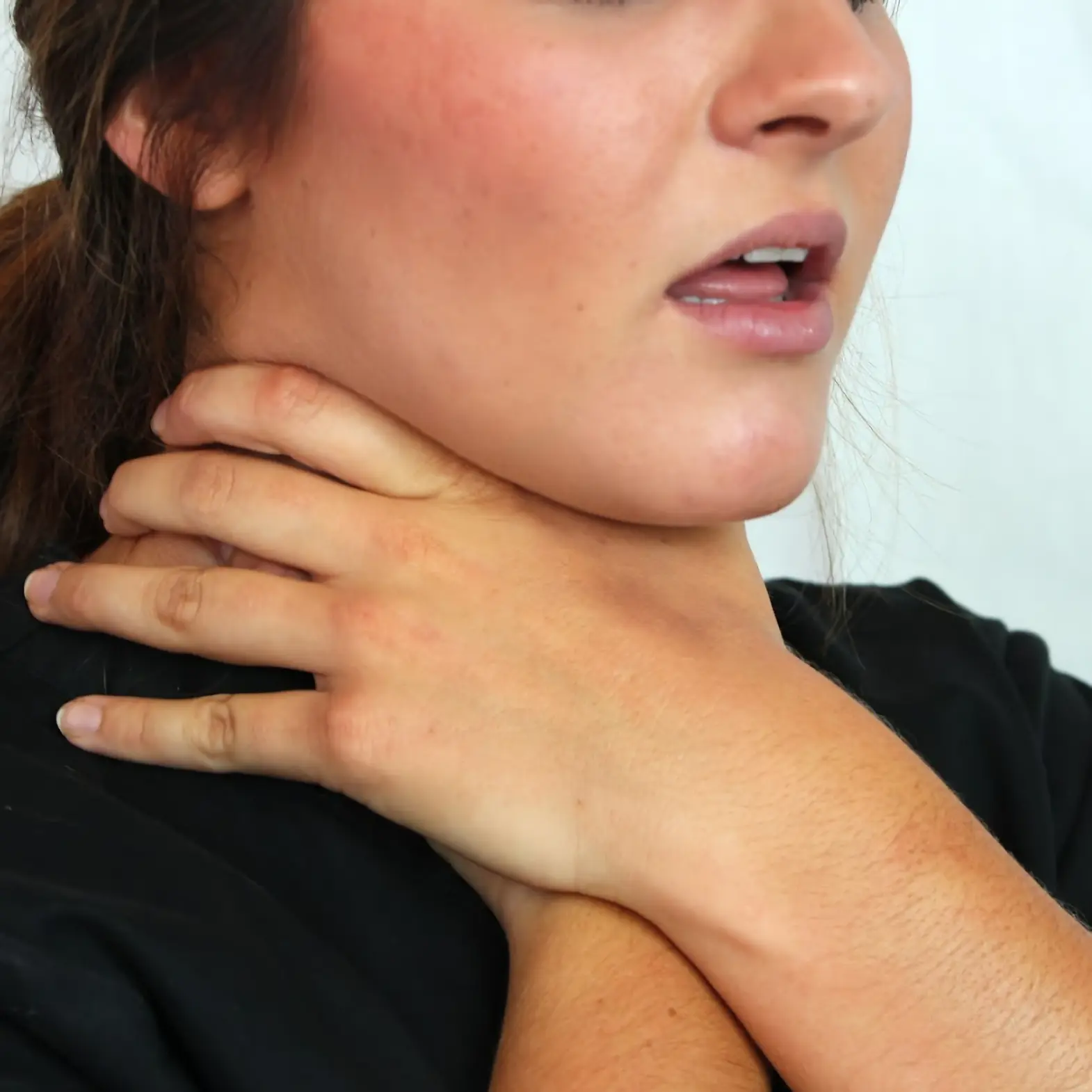
Choking is a common preventable cause of cardiac arrest. The correct response for a choking person depends on the degree of airway obstruction, whether the person is responsive or not, and the age of the person. See Table 3 for rescue actions for choking in adult and children.
Choking In Adults And Children
| DEGREE OF OBSTRUCTION | PERSON’S RESPONSE | RESCUERS ACTION |
|---|---|---|
| Mild Obstruction |
|
|
| Severe Obstruction |
|
|
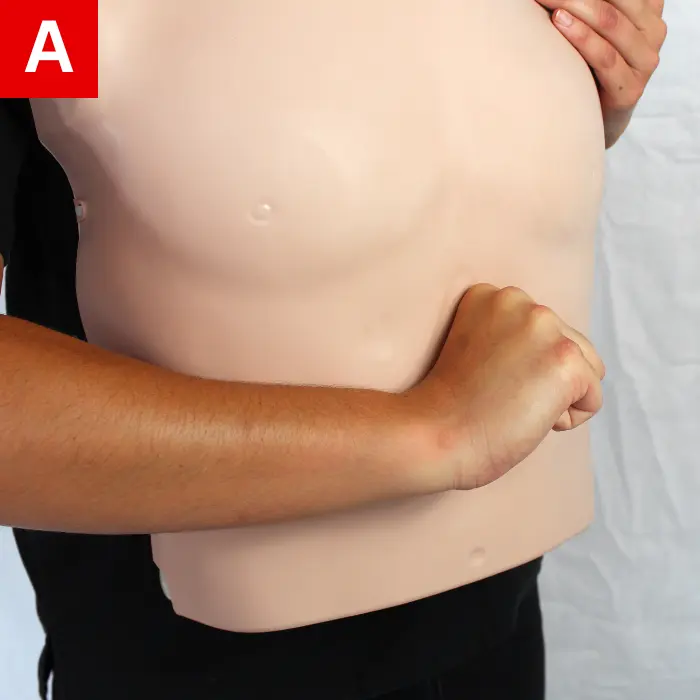
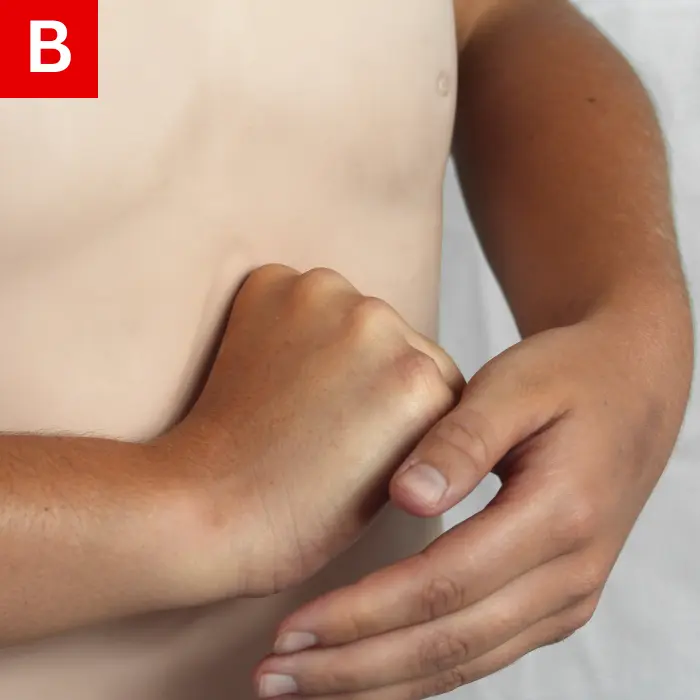
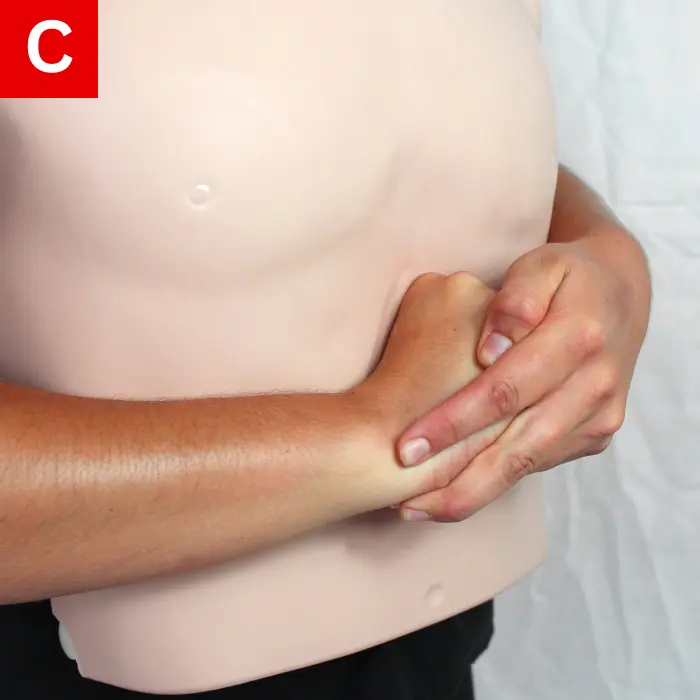
Abdominal Thrusts
These steps should only be used when a person is responsive and older than one year of age.
To properly perform the abdominal thrusts, do the following:
- Stand behind the responsive person. Wrap your arms around their waist under their ribcage.
- Put the side of your fist above the person’s navel in the middle of their belly. Do not press on the lower part of the sternum (Figure 16a).
- With your other hand, hold the first fist and press forcefully into the person’s abdomen and up toward their chest (Figure 16b and 16c).
- Continue performing these thrusts until the obstruction is relieved or until the person becomes unresponsive.
If you can see a foreign object in the individual’s mouth and can easily remove it, then do it. Watch and feel for breathing to begin. If the individual does not begin breathing, continue to provide CPR and rescue breaths until help arrives.
CHOKING IN INFANTS
Choking In Infants
| DEGREE OF OBSTRUCTION | INFANTS’S RESPONSE | RESCUERS ACTION |
|---|---|---|
| Mild Obstruction |
|
|
| Severe Obstruction |
|
|
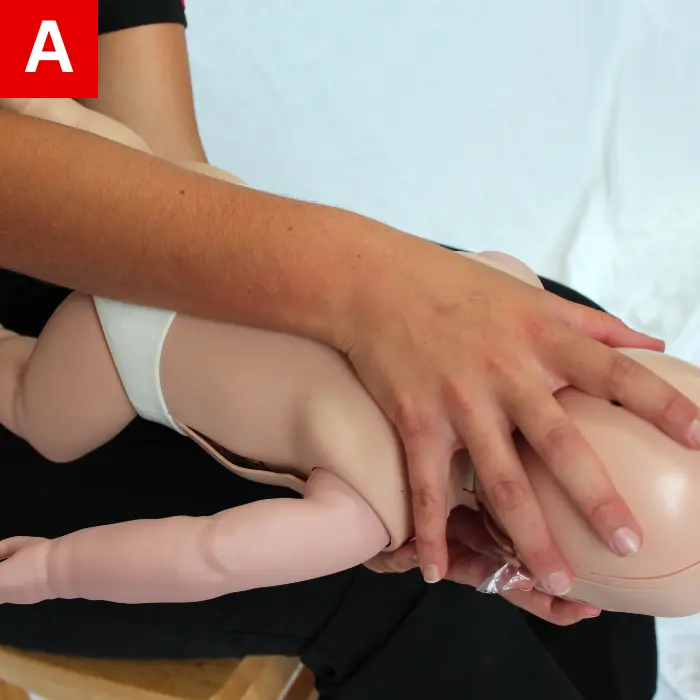
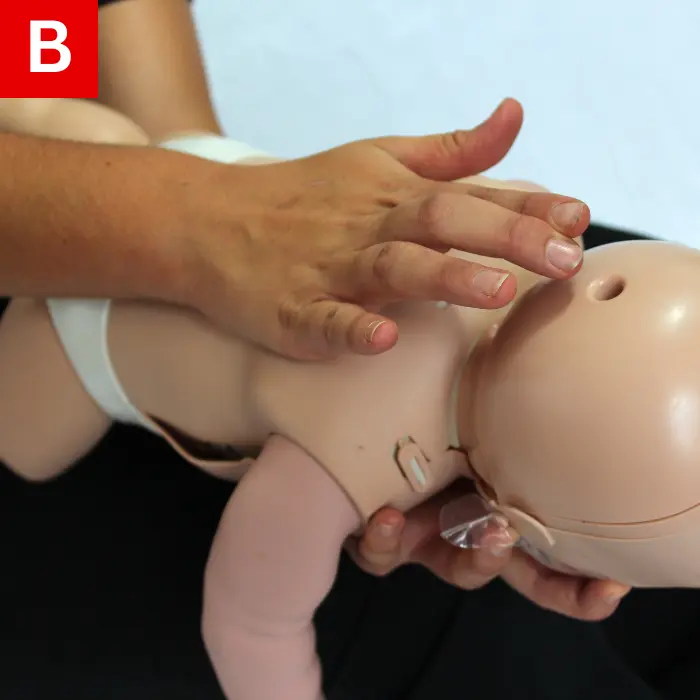
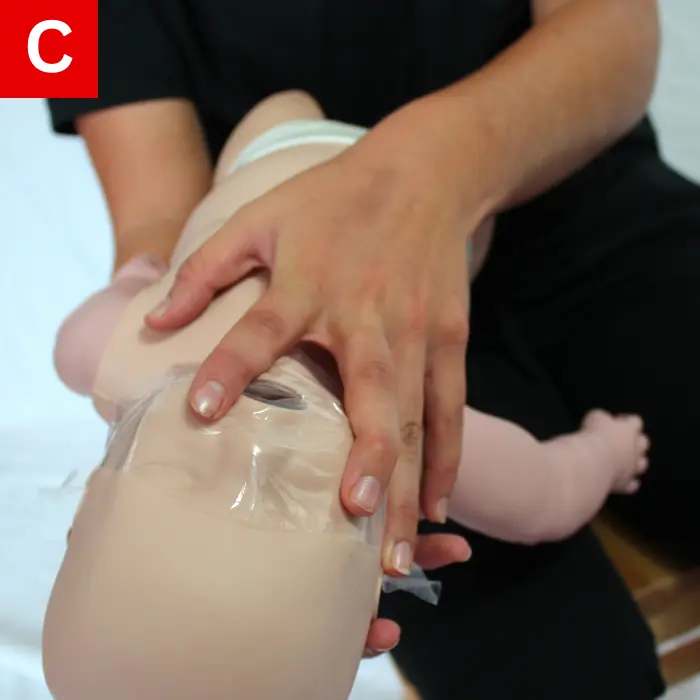
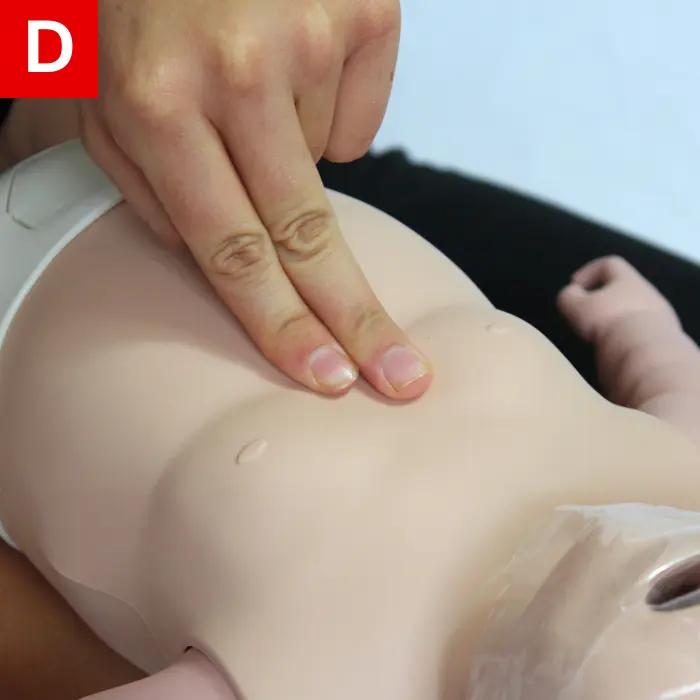
For chest compressions, do the following:
In a choking but responsive infant less than one-year-old, back blows and chest thrusts are used instead of abdominal thrusts. See Table 4 for rescue actions for choking in infants. To provide back blows and chest thrusts, do the following:
- Hold the infant in your lap.
- Put the infant with their face down and their head lower than their chest; they should be resting on your forearm. Put your forearm on your thigh (Figure 17a).
- Support the infant’s head and neck with your hand and be sure to avoid putting pressure on their throat.
- Using the heel of your free hand, deliver five back blows between the infant’s shoulder blades (Figure 17b).
- Using both hands and arms, turn the infant face up so they are now resting on your other arm; this arm should now be resting on your thigh (Figure 17c).
- Make sure the infant’s head is lower than their chest.
- Using the fingers of your free hand, provide up to five quick downward chest thrusts over the lower half of the breastbone (Figure 17d). Perform one thrust every second.
- If the obstruction is not relieved, turn the infant face down on your other forearm and repeat the process (Figure 17b).
- Continue doing these steps until the infant begins to breathe or becomes unresponsive.




